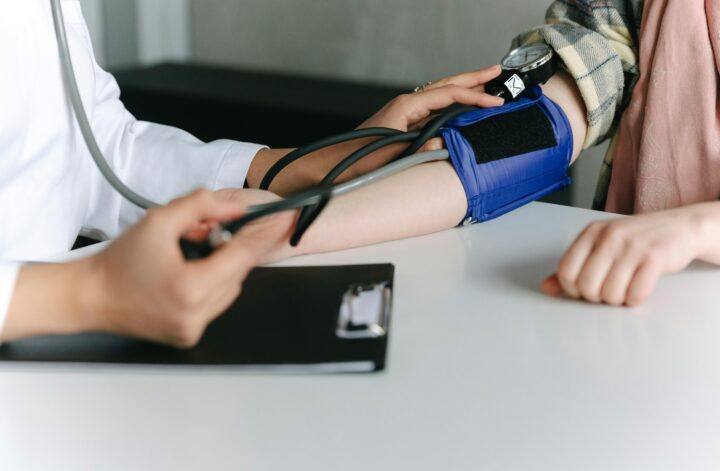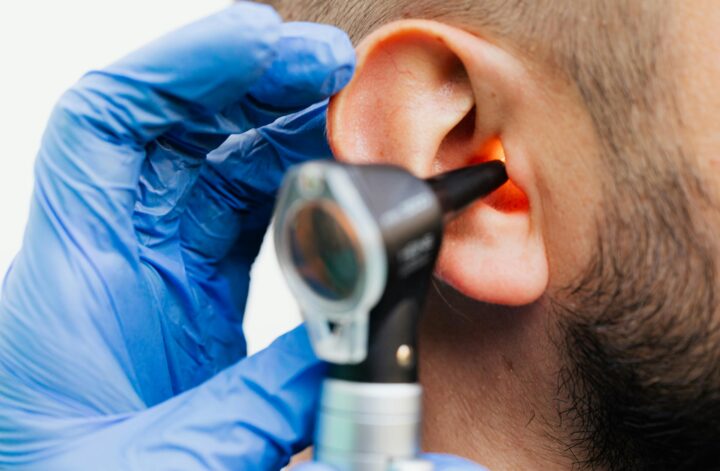High blood pressure, or hypertension, is often referred to as the “silent killer” because it can develop without any noticeable symptoms. Many people are unaware they have high blood pressure until they experience a serious health complication such as a heart attack or stroke. Recognizing the subtle signs and understanding the risk factors of high blood pressure is crucial for early detection and management. This blog post will explore the causes, symptoms, and strategies for managing and preventing high blood pressure.
Understanding High Blood Pressure
High blood pressure occurs when the force of the blood against the artery walls is consistently too high. Blood pressure is measured in millimeters of mercury (mmHg) and is recorded with two numbers: systolic pressure (the top number) and diastolic pressure (the bottom number).
Systolic Pressure: The pressure in your arteries when your heart beats.
Diastolic Pressure: The pressure in your arteries when your heart is resting between beats.
Categories of Blood Pressure
Normal: Systolic less than 120 mmHg and diastolic less than 80 mmHg.
Elevated: Systolic between 120-129 mmHg and diastolic less than 80 mmHg.
Hypertension Stage 1: Systolic between 130-139 mmHg or diastolic between 80-89 mmHg.
Hypertension Stage 2: Systolic 140 mmHg or higher or diastolic 90 mmHg or higher.
Hypertensive Crisis: Systolic higher than 180 mmHg or diastolic higher than 120 mmHg. This requires immediate medical attention.
Causes and Risk Factors
High blood pressure can result from a combination of factors. Some are within your control, while others are not.
Uncontrollable Risk Factors
Age: The risk of high blood pressure increases with age.
Family History: Genetics play a role; high blood pressure can run in families.
Gender: Men are more likely to develop high blood pressure before age 55, while women are more likely to develop it after menopause.
Race: African Americans are at a higher risk of developing high blood pressure compared to other races.
Controllable Risk Factors
Diet: A diet high in sodium, fat, and sugar can contribute to high blood pressure.
Physical Inactivity: Lack of regular exercise can lead to weight gain and increased blood pressure.
Weight: Being overweight or obese increases the risk of hypertension.
Alcohol Consumption: Excessive alcohol intake can raise blood pressure.
Smoking: Tobacco use can damage blood vessels and raise blood pressure.
Stress: Chronic stress can contribute to high blood pressure.
Sleep Apnea: This condition can increase the risk of high blood pressure.
Recognizing the Symptoms
High blood pressure is often asymptomatic, especially in the early stages. However, there are subtle signs and symptoms that may indicate elevated blood pressure:
Mild Symptoms
Headaches: Frequent or severe headaches, especially in the morning.
Dizziness: Feeling lightheaded or dizzy can be a sign of high blood pressure.
Nosebleeds: While not common, nosebleeds can occur with severe hypertension.
Shortness of Breath: Difficulty breathing may indicate high blood pressure.
Severe Symptoms
Blurred Vision: High blood pressure can damage blood vessels in the eyes, leading to vision problems.
Chest Pain: Severe hypertension can cause chest pain or discomfort.
Irregular Heartbeat: Palpitations or an irregular heartbeat can be a symptom.
Fatigue: Persistent fatigue or confusion can be related to high blood pressure.
Hypertensive Crisis Symptoms
If blood pressure rises dramatically, it can lead to a hypertensive crisis, which is a medical emergency. Symptoms include:
Severe Headache: A sudden, severe headache.
Severe Anxiety: Intense feelings of anxiety or restlessness.
Severe Shortness of Breath: Difficulty breathing or feeling like you can’t get enough air.
Nausea and Vomiting: Feeling sick to your stomach or vomiting.
Confusion or Blurred Vision: Sudden changes in vision or mental state.
Complications of Untreated High Blood Pressure
If left untreated, high blood pressure can lead to serious health problems, including:
Heart Disease: High blood pressure can cause coronary artery disease, heart failure, and heart attacks.
Stroke: Hypertension is a leading risk factor for stroke.
Kidney Damage: High blood pressure can damage the blood vessels in the kidneys, leading to kidney disease or failure.
Vision Loss: Damage to the blood vessels in the eyes can result in vision problems or blindness.
Aneurysm: Increased pressure can cause blood vessels to weaken and bulge, leading to aneurysms.
Metabolic Syndrome: A cluster of conditions that increase the risk of heart disease, stroke, and diabetes.
Diagnosing High Blood Pressure
Regular Check-Ups
Regular blood pressure checks are essential for early detection and management of hypertension. Adults should have their blood pressure checked at least once every two years, or more frequently if they have risk factors for hypertension.
Home Monitoring
Home blood pressure monitors can help you track your blood pressure regularly. This can provide valuable information for you and your healthcare provider.
Ambulatory Monitoring
For some patients, doctors may recommend 24-hour ambulatory blood pressure monitoring. This method provides a more comprehensive picture of your blood pressure changes over a day and night.
Strategies for Managing High Blood Pressure
Managing high blood pressure involves lifestyle changes, medication, and regular monitoring. Here are some effective strategies:
Lifestyle Changes
Healthy Diet: Follow a balanced diet rich in fruits, vegetables, whole grains, and lean proteins. The DASH (Dietary Approaches to Stop Hypertension) diet is specifically designed to reduce blood pressure.
Reduce Sodium: Limit sodium intake to less than 2,300 milligrams per day, and ideally aim for 1,500 milligrams for optimal blood pressure control.
Regular Exercise: Aim for at least 150 minutes of moderate-intensity exercise each week. Activities such as walking, cycling, and swimming can help lower blood pressure.
Maintain a Healthy Weight: Losing even a small amount of weight can help reduce blood pressure.
Limit Alcohol: Consume alcohol in moderation. This means up to one drink per day for women and up to two drinks per day for men.
Quit Smoking: Smoking cessation can significantly improve overall health and reduce blood pressure.
Manage Stress: Techniques such as deep breathing, meditation, and yoga can help manage stress levels.
Medication
When lifestyle changes are not enough, medication may be necessary. There are several types of medications used to treat high blood pressure:
Diuretics: Help remove excess sodium and water from the body.
ACE Inhibitors: Help relax blood vessels.
Angiotensin II Receptor Blockers (ARBs): Prevent blood vessels from narrowing.
Calcium Channel Blockers: Help relax the muscles of the heart and blood vessels.
Beta Blockers: Reduce the workload on the heart and open blood vessels.
Regular Monitoring
Keep track of your blood pressure readings and follow up with your healthcare provider regularly. This helps ensure your treatment plan is working and allows for adjustments if necessary.
Prevention Tips
Preventing high blood pressure involves adopting a healthy lifestyle. Here are some tips to help you maintain healthy blood pressure levels:
Regular Physical Activity: Engage in regular physical activities that you enjoy and can sustain over the long term.
Healthy Eating Habits: Make healthy eating a permanent part of your lifestyle rather than a temporary diet.
Monitor Blood Pressure: Keep an eye on your blood pressure regularly, especially if you have risk factors.
Stay Hydrated: Drink plenty of water and avoid excessive caffeine and sugary drinks.
Sleep Well: Ensure you get adequate sleep each night, aiming for 7-9 hours.
Limit Processed Foods: Avoid processed and packaged foods high in sodium and unhealthy fats.
Conclusion
High blood pressure is a silent threat that can lead to severe health complications if left unchecked. Understanding the causes, recognizing the subtle symptoms, and adopting a proactive approach to managing and preventing high blood pressure are crucial steps toward maintaining good health. Regular check-ups, a healthy lifestyle, and effective stress management can help keep your blood pressure within a healthy range, ensuring a longer, healthier, and more vibrant life. Prioritize your heart health today and take control of your blood pressure for a better tomorrow.



